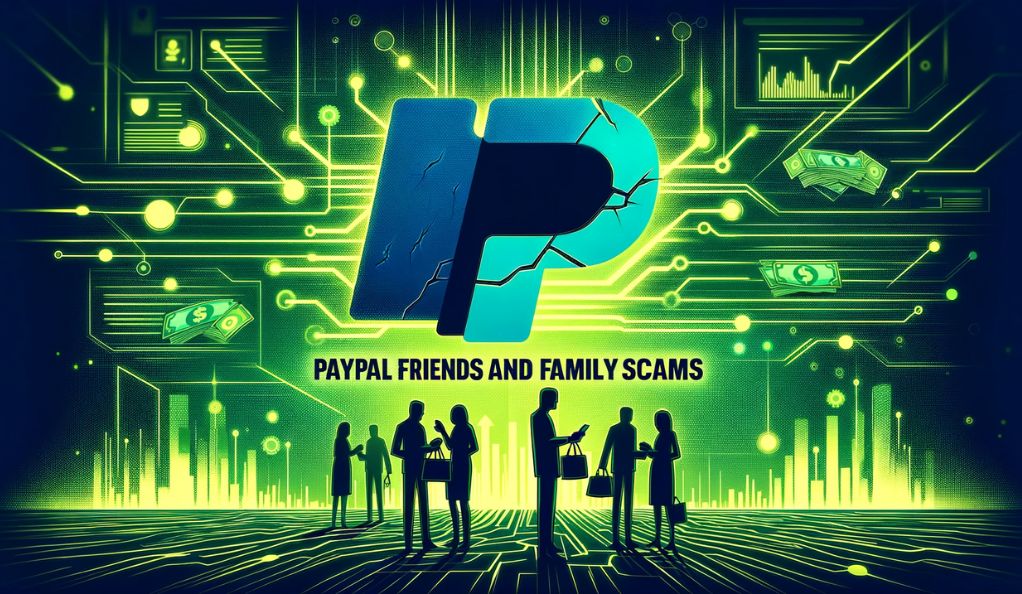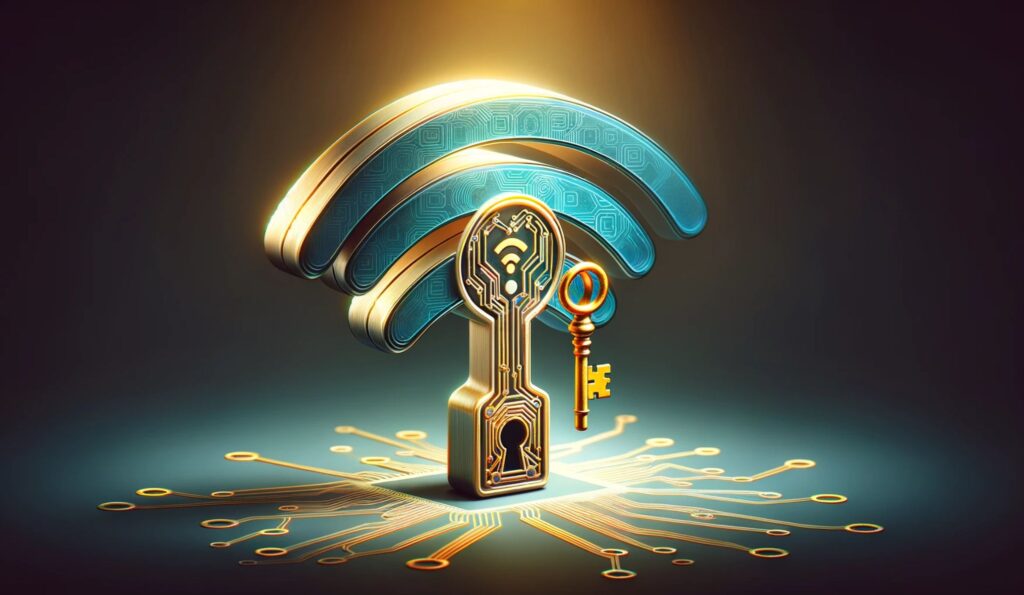The digital era has revolutionized the way we handle transactions, with online payments becoming a cornerstone of our daily financial activities. However, this convenience comes with its own set of risks, one of which is the notorious PayPal Friends and Family Scam. This scam has emerged as a significant concern, exploiting the trust and convenience offered by PayPal’s popular payment service. It underscores the need for vigilance and awareness among users to safeguard their hard-earned money against such deceitful tactics.
The Growing Concern of Online Payment Scams
The rise of online payment scams is alarming. As technology advances, scammers find more sophisticated ways to deceive unsuspecting users. These scams range from phishing emails and fraudulent websites to more intricate schemes like the PayPal Friends and Family Scam. The impact of these scams is not just financial; they also erode the trust in digital payment systems. Understanding these scams’ nature and staying informed about the latest fraudulent practices is crucial for personal and financial security in the digital age.
Overview of PayPal’s Friends and Family Feature
PayPal’s Friends and Family feature is designed for non-commercial transactions, allowing users to send money to people they trust without a fee. This feature is ideal for splitting bills, gifting, or other personal money exchanges. However, its convenience also makes it an attractive target for scammers. Unlike commercial transactions, Friends and Family payments lack the protection and dispute resolution services provided by PayPal, making it a risky option for payments to unknown parties. Recognizing this vulnerability is essential for PayPal users to make informed and secure transaction decisions.
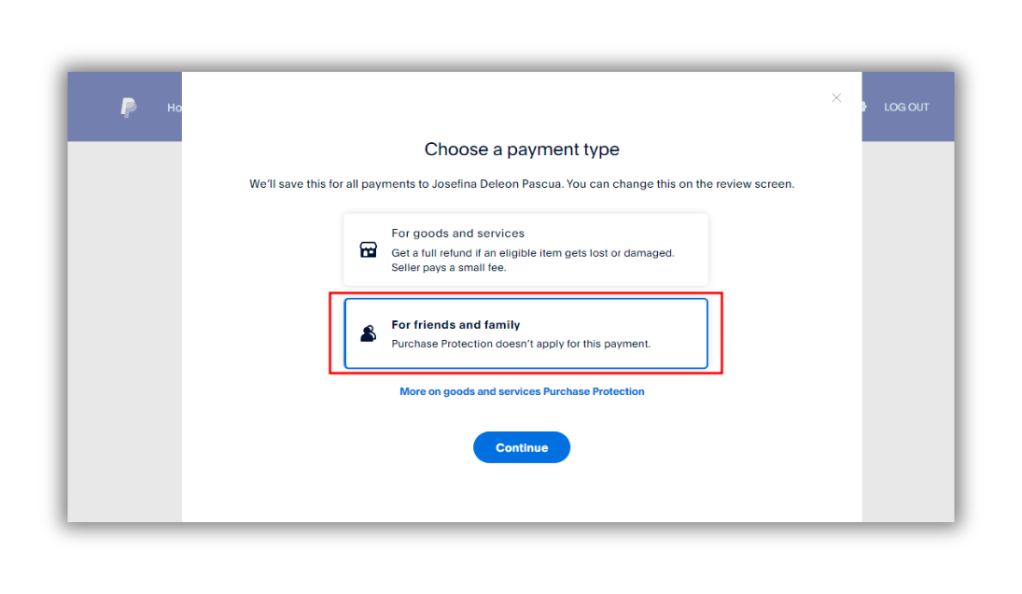
What is the PayPal Friends and Family Scam?
The PayPal Friends and Family scam is a deceptive scheme where fraudsters exploit PayPal’s personal payment system. Typically used for transferring money among friends and family without fees, this service lacks the safeguards of commercial transactions. Scammers trick individuals into using this method for purchasing goods or services, leaving victims with no recourse through PayPal’s buyer protection policies when the goods are not delivered or services are not rendered as promised.
How Scammers Exploit the System
Scammers exploit the Friends and Family system by persuading buyers to use this payment method for goods or services, often offering discounts or other incentives. Once payment is sent, the scammer either disappears or delivers substandard or counterfeit items. Since the Friends and Family option is designed for trusted relationships and not for commercial transactions, PayPal’s usual dispute resolution and buyer protection do not apply. This lack of protection makes it nearly impossible for victims to reclaim their money, turning a seemingly harmless transaction into a costly mistake.
Real Examples of the Scam in Action
- Online Marketplace Scams: A buyer finds a desirable item at a lower price on an online marketplace. The seller insists on using PayPal Friends and Family for the transaction, citing reasons like avoiding fees or speeding up the process. After the payment, the seller becomes unresponsive, and the item is never delivered.
- Social Media Scams: Through social media platforms, scammers set up fake profiles or hack into existing ones. They advertise popular products at attractive prices, again requesting payment through the Friends and Family option. Unsuspecting buyers transfer the money, only to receive nothing in return.
- Email Phishing Scams: In a more indirect approach, scammers send phishing emails disguised as PayPal, prompting users to make a Friends and Family payment for bogus reasons, such as account verification or unlocking certain features. Once the payment is made, the scammers gain access to the funds with little to no traceability.
Recognizing PayPal Friends and Family Scam Tactics
Identifying and understanding the tactics used in the PayPal Friends and Family scam is crucial for anyone who uses PayPal for online transactions. Scammers have become increasingly clever in their methods, but knowing what to look out for can significantly reduce the risk of falling victim to these scams. Being informed about these tactics is the first step in safeguarding your finances in the digital realm.
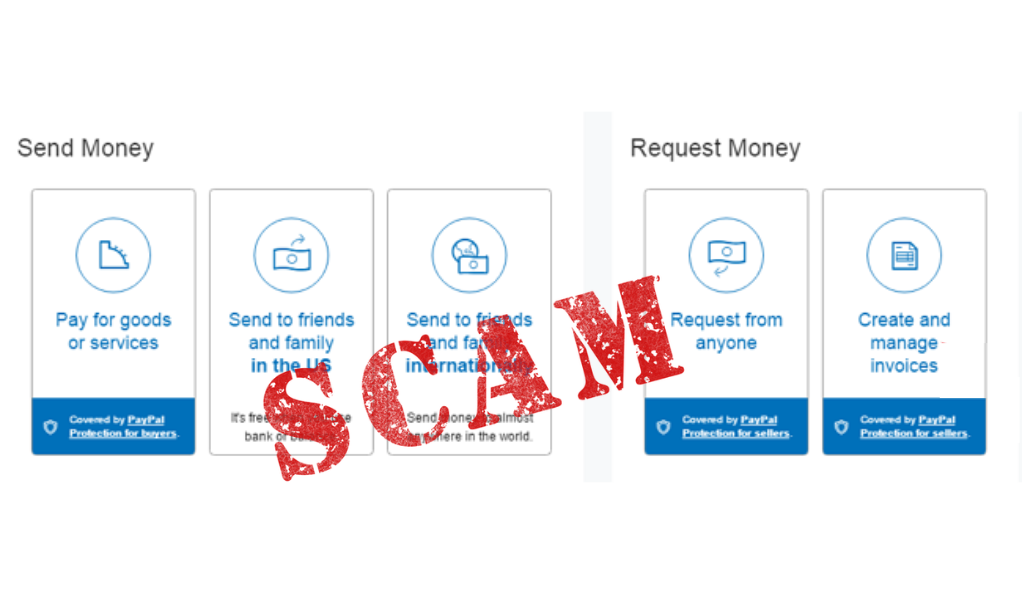
Common Red Flags and Warning Signs
Several red flags and warning signs can help you recognize a potential PayPal Friends and Family scam:
- Pressure to Use Friends and Family for Business Transactions: Be cautious if a seller insists on using this feature for a purchase, especially if it’s an online transaction with someone you don’t know personally.
- Too-Good-To-Be-True Offers: If a deal seems too good to be true, such as significantly lower prices than usual, it probably is. Scammers often lure victims with attractive deals.
- Unusual Payment Requests: Watch out for sellers who request payments split into multiple transactions or to different accounts, as this could be a tactic to avoid detection.
- No Paper Trail or Receipts: A legitimate business transaction should have a proper paper trail. If the seller is hesitant to provide receipts or invoices, it’s a red flag.
- Rushed Decisions: Scammers often create a sense of urgency to rush you into making a payment without thinking it through.
Case Studies and Personal Stories
Understanding real-life scenarios helps put these warning signs into context:
- The Online Marketplace Incident: John found a laptop for sale at half the retail price on an online marketplace. The seller requested payment via PayPal Friends and Family, citing a quick sale. After the payment was made, the seller’s account disappeared, and John never received the laptop.
- Social Media Scam Experience: Sarah encountered a seller on a social media platform selling designer handbags at a steep discount. The seller insisted on using PayPal Friends and Family for the transaction. After making the payment, Sarah received fake handbags, and the seller blocked her.
- Urgent Sale Scam: Mark was interested in buying a guitar from an individual who claimed they needed quick cash. The seller pressed for payment via PayPal Friends and Family, promising to ship the guitar immediately. After Mark transferred the money, the seller became unresponsive, and the guitar was never sent.
These case studies highlight the importance of vigilance and the need to be wary of common red flags. By understanding these tactics and listening to personal stories of those who have been scammed, you can better protect yourself against the PayPal Friends and Family scam.
Can You Get Your Money Back After Being Scammed?
One of the most pressing concerns for victims of the PayPal Friends and Family scam is whether they can recover their lost funds. While the process can be challenging due to the nature of these transactions, understanding PayPal’s policies and knowing the appropriate steps to take can increase the chances of getting your money back.
PayPal’s Policy on Friends and Family Transactions
PayPal’s Friends and Family service is intended for transactions among trusted individuals, such as family and friends. Unlike payments for goods and services, these transactions lack similar protective measures. PayPal clearly indicates that Friends and Family payments fall outside the scope of their Buyer Protection program. Consequently, if this service is used for purchasing goods or services that are fraudulent, PayPal usually does not provide a refund. Nevertheless, in specific situations, particularly when a payment is reported as unauthorized, PayPal may conduct an investigation.
Steps to Take for Possible Refunds
If you find yourself a victim of a Friends and Family scam, there are a few steps you can take:

- Contact the Seller: First, try to resolve the issue directly with the seller. Sometimes, misunderstandings can be cleared up without involving third parties.
- Report to PayPal: Report the issue to PayPal if direct communication fails. PayPal may investigate your case, especially if reported as unauthorized, even though Friends and Family transactions are not covered under Buyer Protection, as they are interested in fraudulent activities.
- File a Complaint with Financial Authorities: Report the scam to your local financial authority or consumer protection agency. They might not be able to directly get your money back, but their involvement can add pressure.
- Contact Your Bank or Credit Card Company: If you funded the PayPal payment through a bank account or credit card, contact them to explain the situation. Some banks and credit card companies have mechanisms for disputing transactions.
- Gather and Preserve Evidence: Collect all communications, transaction receipts, and any other relevant information. This will be crucial in making your case to PayPal, your bank, or legal authorities.
- Consider Legal Advice: For significant amounts, it may be worth consulting a legal professional to explore your options.
Taking these steps can increase your chances of getting a refund, even though it’s not guaranteed in cases of Friends and Family scams, and also help bring the scam to the attention of relevant authorities.
Preventative Measures Against PayPal Scams
In the world of online transactions, PayPal scams are a real and persistent threat. However, with the right knowledge and tools, you can significantly reduce the risk of falling victim to these scams. Taking proactive steps to safeguard your transactions is essential in the digital age. Understanding and implementing best practices for online payments and utilizing available tools and resources for enhanced security can make a substantial difference.
Best Practices for Safe Online Transactions
To ensure safety during online transactions, consider the following best practices:
- Verify the Seller’s Credibility: Before making any payment, research the seller’s background. Check for reviews, ratings, and any available feedback from previous transactions.
- Be Skeptical of Unusual Payment Requests: If a seller asks for payment through the Friends and Family feature for a purchase, it’s a red flag. This method should only be used for transactions with people you know and trust.
- Use Secure Networks for Transactions: Avoid making transactions over public or unsecured Wi-Fi networks. These can be prone to interception by scammers.
- Keep Software and Security Measures Updated: Ensure that your computer and mobile devices have the latest security updates and antivirus software.
- Educate Yourself about Common Scams: Awareness is key. Familiarize yourself with the common tactics used by scammers so you can recognize and avoid them.
Tools and Resources for Enhanced Security
Several tools and resources are available to enhance the security of your online transactions:
- PayPal Security Center: PayPal offers a security center on their website with tips, tools, and resources to help keep your account secure.
- Two-Factor Authentication (2FA): Activate 2FA on your PayPal account. This adds an extra layer of security, requiring a second form of verification in addition to your password.
- Secure Payment Gateways: When shopping online, ensure that the website uses secure payment gateways for transactions.
- Fraud Alerts: Set up fraud alerts with your bank or credit card provider. They can notify you of any unusual activity in your accounts.
- Regular Account Monitoring: Regularly check your PayPal account and bank statements for any unauthorized transactions.
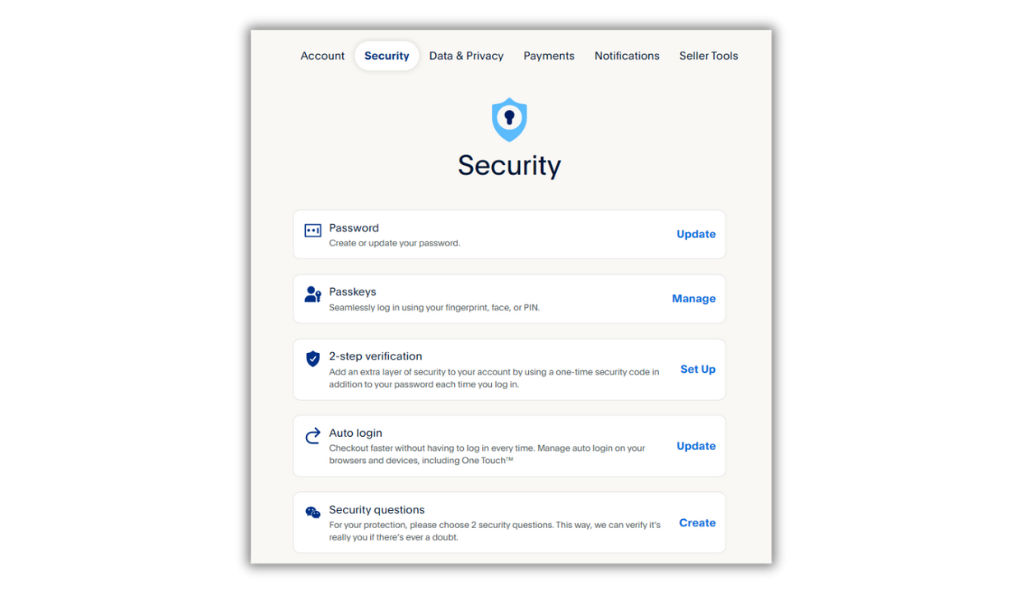
Legal Recourse in Cases of Fraud
When falling victim to a PayPal Friends and Family scam, understanding the available legal recourses is critical. While the digital nature of these scams can make legal action challenging, there are still steps you can take to seek justice and possibly recover your losses. Navigating the legal landscape requires a clear understanding of your rights as a consumer and the appropriate channels for reporting such fraud.
Reporting the Scam to Authorities
If you’re a victim of a PayPal scam, it’s important to report it to the relevant authorities:
- Local Law Enforcement: File a report with your local police. They might have a digital crimes unit specializing in online fraud.
- Internet Crime Complaint Center (IC3): In the United States, you can file a complaint with the IC3, a partnership between the FBI and the National White Collar Crime Center.
- Federal Trade Commission (FTC): Report the scam to the FTC. While they don’t resolve individual complaints, they use this information to track patterns of fraud, which can lead to investigations.
- Consumer Protection Agency: Your country may have a specific agency dedicated to consumer protection where you can report the scam.
Remember to provide as much detail as possible, including transaction records, communications with the scammer, and any other relevant information.
Understanding Your Rights as a Consumer
As a consumer, you have certain rights that can be exercised in cases of fraud:
- Right to Report: You have the right to report any fraudulent activity to the authorities and demand an investigation.
- Right to Information: You’re entitled to be informed about how to protect yourself from scams and what to do if you’re a victim.
- Right to Dispute Unauthorized Transactions: If your PayPal account was used without your permission, you have the right to dispute those transactions.
- Legal Action: Depending on the severity and circumstances of the scam, you may have the right to pursue legal action against the perpetrator, though this can be complex in cases involving international jurisdictions.
Conclusion: Staying Vigilant in the Digital Age
As we navigate the complexities of the digital world, staying vigilant against scams, particularly the PayPal Friends and Family scam, is more important than ever. The rise of online transactions has brought with it an increase in sophisticated scams that can catch even the most cautious individuals off guard. Awareness and education are our strongest tools in this ongoing battle against digital fraudsters. By staying informed about the latest scam tactics, understanding the protective measures available, and knowing the steps to take if you find yourself a victim, you can significantly reduce your risk of falling prey to these deceptive practices.
In the digital age, the responsibility of safeguarding our finances extends beyond traditional means. It requires a proactive approach, combining the use of technology with a keen sense of awareness. As we continue to embrace the conveniences of digital payments, let us also commit to staying informed and vigilant, ensuring that our transactions remain secure and our finances protected. Remember, in the world of online transactions, caution and knowledge are your best defense.

